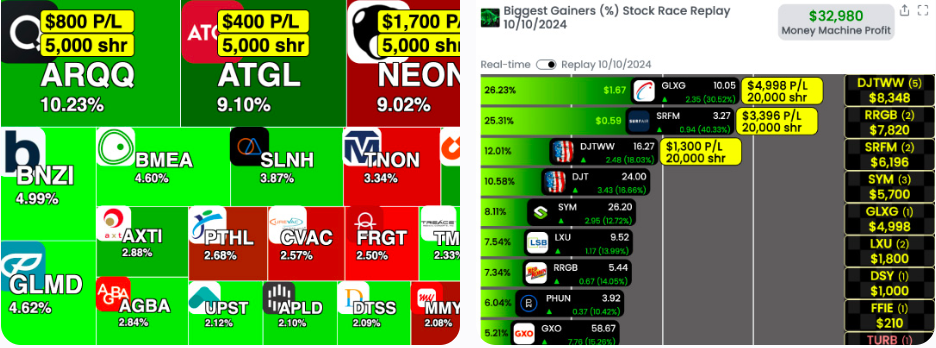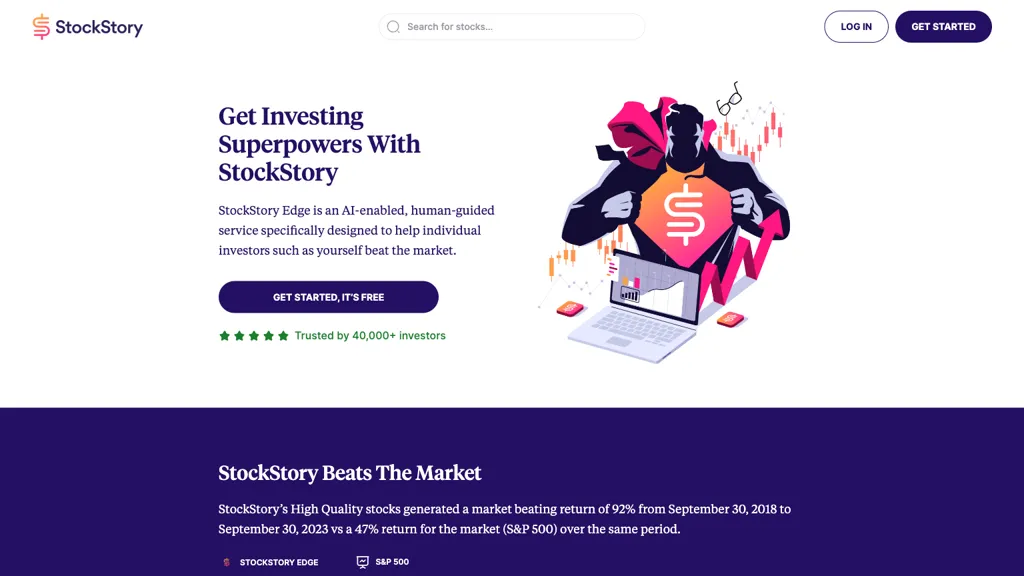20 Top Facts On Picking AI Stock Trading Analysis Websites
20 Top Facts On Picking AI Stock Trading Analysis Websites
Blog Article
Top 10 Tips To Evaluate The Ai And Machine Learning Models In Ai Trading Platforms For Stock Prediction And Analysis.
It is crucial to evaluate the AI and Machine Learning (ML) models that are used by trading and stock prediction systems. This ensures that they offer precise, reliable and useful insights. Models that are not well-designed or overhyped could result in incorrect forecasts and financial losses. Here are 10 top methods to evaluate AI/ML models on these platforms.
1. Understand the Model's Purpose and Method of Approach
A clear objective: Determine if the model was developed for trading in short-term terms, long-term investments, sentiment analysis, or risk management.
Algorithm transparency - Look for any public disclosures regarding the algorithms (e.g. decision trees, neural nets, reinforcement learning etc.).
Customizability: Determine if the model is able to adapt to your specific trading strategy or risk tolerance.
2. Review model performance through metrics
Accuracy Test the model's predictive accuracy. Do not rely solely on this measure, but it could be inaccurate.
Recall and precision: Determine whether the model is able to identify real positives (e.g., correctly predicted price changes) and minimizes false positives.
Risk-adjusted return: Determine whether the model's predictions result in profitable trades after taking into account risks (e.g. Sharpe ratio, Sortino coefficient).
3. Make sure you test the model using Backtesting
Backtesting your model with the data from the past allows you to compare its performance with previous market conditions.
Check the model against information that it hasn't been taught on. This can help prevent overfitting.
Analyzing scenarios: Examine the model's performance in various market conditions.
4. Check for Overfitting
Overfitting: Look for models that perform well with training data, but don't perform as well with unseen data.
Regularization Techniques: Check to see if the platform is using techniques such as regularization of L1/L2 or dropout to avoid overfitting.
Cross-validation is essential for any platform to utilize cross-validation to assess the model generalizability.
5. Assess Feature Engineering
Check for relevant features.
Choose features: Ensure that the system only includes important statistically relevant features and doesn't include irrelevant or irrelevant information.
Updates to dynamic features: Check if your model has been updated to reflect recent characteristics and current market conditions.
6. Evaluate Model Explainability
Model Interpretability: The model should provide clear explanations to its predictions.
Black-box platforms: Beware of platforms that utilize excessively complex models (e.g. neural networks deep) without explainability tools.
User-friendly insights: Ensure that the platform gives actionable insights which are presented in a way that traders will understand.
7. Reviewing the Model Adaptability
Market fluctuations: See whether your model is able to adjust to market shifts (e.g. new laws, economic shifts or black-swan events).
Continuous learning: See if the model is updated regularly with new data to boost the performance.
Feedback loops. Make sure you include user feedback or actual outcomes into the model to improve it.
8. Be sure to look for Bias in the elections
Data bias: Ensure that the information provided used in the training program are accurate and does not show bias (e.g., a bias towards specific sectors or periods of time).
Model bias: Find out if the platform actively monitors and reduces biases in the predictions of the model.
Fairness: Make sure the model doesn't favor or disadvantage specific sectors, stocks or trading strategies.
9. Evaluate the effectiveness of Computational
Speed: Check if the model generates predictions in real-time or at a low delay. This is particularly important for high-frequency traders.
Scalability Verify the platform's ability to handle large amounts of data and users simultaneously without performance loss.
Resource usage: Check to determine if your model is optimized to use efficient computational resources (e.g. GPU/TPU use).
10. Transparency in Review and Accountability
Model documentation. You should have an extensive documents of the model's structure.
Third-party validation: Determine whether the model has been independently validated or audited an outside person.
Error Handling: Determine if the platform is equipped with mechanisms that identify and correct mistakes in the models or in failures.
Bonus Tips
Reviews of users and Case Studies Review feedback from users and case studies in order to evaluate the actual performance.
Free trial period: Test the accuracy and predictability of the model with a demo, or a no-cost trial.
Customer support: Ensure the platform provides robust support for model or technical issues.
If you follow these guidelines by following these tips, you will be able to evaluate the AI and ML models used by stock prediction platforms, ensuring they are trustworthy, transparent, and aligned with your trading goals. See the top ai for investment for blog recommendations including ai stock, trading with ai, ai investing, market ai, ai investing platform, market ai, ai investment app, ai for stock trading, chart ai trading assistant, ai for stock trading and more.
Top 10 Tips To Evaluate The Community And Social Features In Ai Platform For Predicting And Analyzing Stocks
It is crucial to know the ways that users communicate, exchange information and learn from each other through analyzing the social and community capabilities of AI-driven prediction platforms and trading platforms. These features enhance the user experience through providing valuable assistance. Here are the top 10 suggestions for evaluating social or community features available on these platforms.
1. Active User Community
Tips - Make sure the platform is backed by a base of users active in engaging in regular discussions, sharing insight, and providing feedback.
Why: An actively-active community indicates an ecosystem that allows users to grow and learn by sharing their experiences.
2. Discussion Forums and Boards
Tips: Examine the level of engagement and the quality in discussion forums or message boards.
Why Forums are excellent method for users to exchange ideas, discuss trends, and also ask questions.
3. Social Media Integration
TIP: Determine if the platform integrates with social media channels (e.g., Twitter, LinkedIn) for sharing information and updates.
Why social media integration can boost engagement and give actual time market information.
4. User-Generated content
Find features that allow you to share and create content. For instance, you can create blogs, articles, or trading strategies.
Why: User generated content fosters collaboration and offers a different perspective.
5. Expert Contributions
Check to see if experts from the field such as market analysts, or AI experts, have contributed to the project.
Why: Expert perspectives add credibility and depth in the community discussion.
6. Chat and messaging in real-time.
Tips: Examine the availability of instant chat or messaging capabilities to allow instant messaging between users.
Real-time interactions allow for rapid exchange of information as well as collaboration.
7. Community Moderation and Support
Tip: Assess the level of moderation and support provided within the community (e.g. moderators and moderators as well as support staff, etc.).
Why Positive and respectful environment is created by a well-executed moderation. Customer assistance quickly solves issues for users.
8. Events and webinars
Tips - Find out if the platform offers live Q&A with experts as well as webinars, and other events.
The reason: These events provide a great opportunity to learn and meet directly with industry professionals.
9. User Reviews
Find platforms that allow users write reviews or leave feedback on their community features and platform.
What is the purpose: Feedback from users are used to identify strengths and areas for improvement in the community ecosystem.
10. Gamification of Rewards
TIP: Find out whether there are features that allow for gamification (e.g. badges or leaderboards,) or rewards for participating.
Gamification is a way to encourage community members to be more active.
Bonus tip: Security and privacy
Make sure you use strong privacy measures and security for the community and social features. This will safeguard your information and personal interactions.
You can look at these factors to determine if you're capable of finding a platform that provides a welcoming active community that can help you improve your knowledge and skills in trading. Read the recommended ai stock investing for website examples including ai tools for trading, best ai trading platform, ai stock price prediction, free ai stock picker, stock trading ai, ai software stocks, best ai stock prediction, best ai stocks to buy now, best stock prediction website, best ai stocks to buy now and more.